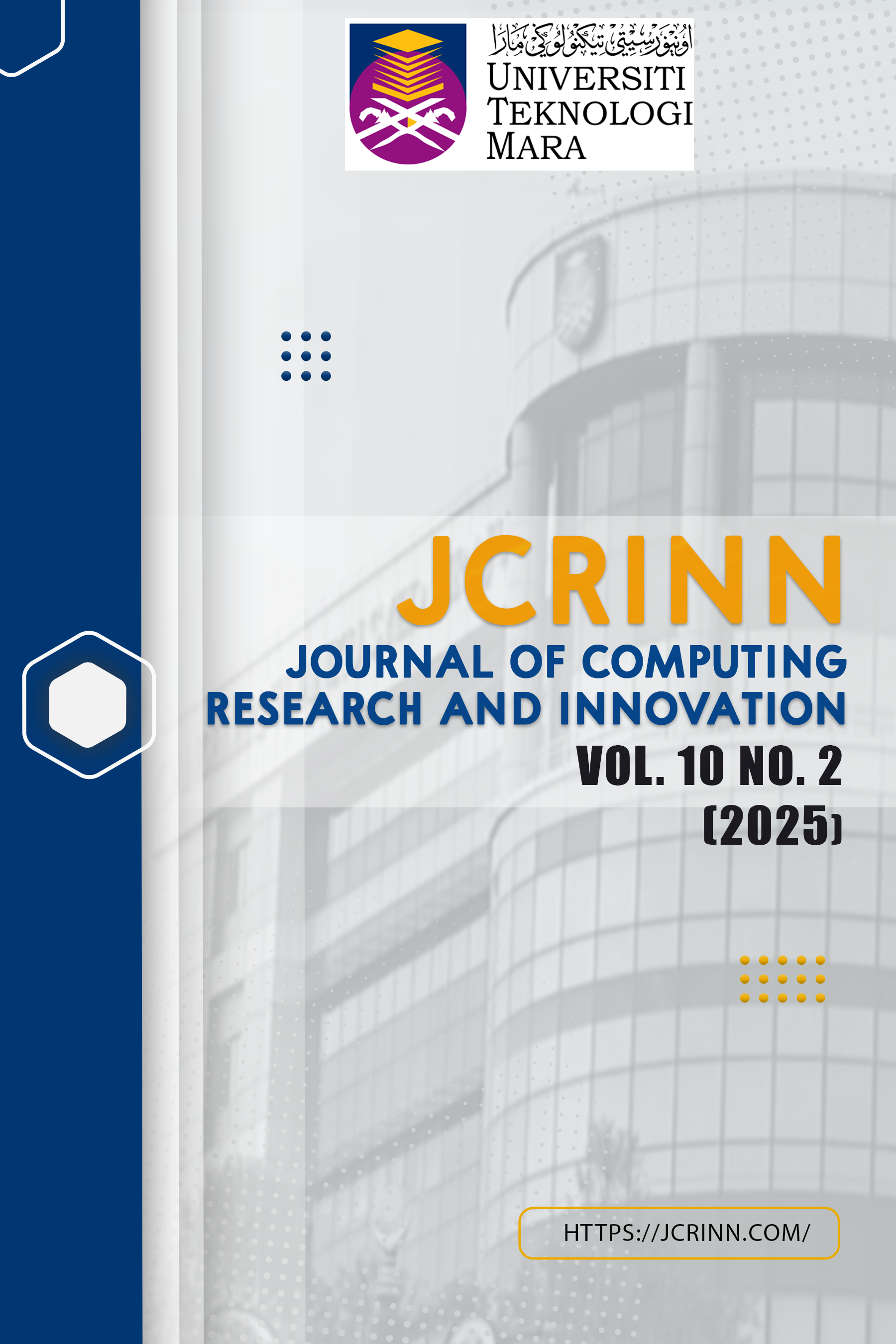COVID-19 Spread in Malaysia Using SIR Model
DOI:
https://doi.org/10.24191/jcrinn.v10i2.513Keywords:
COVID-19, SIR Model, Markov Chain Model, Mathematical Modelling, Basic Reproduction Number, Transition Probability MatrixAbstract
The COVID-19 pandemic had a significant impact globally. Negative impacts include the total number of losses in overall population size and economic decline. This study focuses on applying the simple Susceptible-Infected-Recovered (SIR) model to analyze COVID-19 cases in Malaysia for a time span of 100 days, from 1/5/2024 up to 8/8/2024. The key parts to gain the result can be divided into two which are data collection of daily COVID-19 cases in Malaysia from the website of Ministry of Health and solving the differential equations using R studio. From the SIR Model, the findings provide the estimation of transmission rate (𝛽), recovery rate (𝛾), and a basic reproduction number (), along with the graph of trends of COVID-19 in Malaysia for 100 days. From the values gained, this study aims to construct a Markov chain transition matrix to explain the disease spread more effectively.
Downloads
References
Achmad, A. L. H., Mahrudinda, N., & Ruchjana, B. N. (2021). Stationary distribution Markov chain for Covid-19 pandemic. Journal of Physics Conference Series, 1722(1), 012084. https://doi.org/10.1088/1742-6596/1722/1/012084
Bjørnstad, O. N. (2022). Epidemics: Models and data using R. Springer. https://doi.org/10.1007/978-3-031-12056-5
Centers for Disease Control and Prevention (CDC). (2021). Understanding the Basics of Epidemiology. World Health Organization (WHO).
D´ebarre, F., & Bonhoeffer, S. (2019). SIR models of epidemics Level 1 module in Modelling course in population and evolutionary biology (701-1418-00). Theoretical Biology Institute of Integrative Biology ETH Z¨urich.
Morris, S. E., & Bjørnstad, S. O. N. (2020). shinySIR: Interactive plotting for infectious disease models. ResearchGate. https://www.researchgate.net/publication/349952415_shinySIR_Interactive_Plotting_for_Mathematical_Models_of_Infectious_Disease_Spread
Omar, F. M., Sohaly, M. A., & El-Metwally, H. (2024). Susceptible-exposed-infectious model using Markov chains. Journal of Nonlinear Mathematical Physics, 31(1). https://doi.org/10.1007/s44198-024-00167-3
Salim, N., Chan, W. H., Mansor, S., Bazin, N. E. N., Amaran, S., Faudzi, A. a. M., Zainal, A., Huspi, S. H., Hooi, E. K. J., & Shithil, S. M. (2020). COVID-19 epidemic in Malaysia: Impact of lockdown on infection dynamics. medRxiv (Cold Spring Harbor Laboratory). https://doi.org/10.1101/2020.04.08.20057463
Singh, A. (2024, June 18). Agent based modeling: Techniques and applications. BuiltIn. https://builtin.com/articles/agent-based-modeling
Tang, J., Bahnfleth, W., Bluyssen, P., Buonanno, G., Jimenez, J., Kurnitski, J., Li, Y., Miller, S., Sekhar, C., Morawska, L., Marr, L., Melikov, A., Nazaroff, W., Nielsen, P., Tellier, R., Wargocki, P., & Dancer, S. (2021). Dismantling myths on the airborne transmission of severe acute respiratory syndrome coronavirus-2 (SARS-CoV-2). Journal of Hospital Infection, 110, 89–96. https://doi.org/10.1016/j.jhin.2020.12.022
Viboud, C., Simonsen, L., & Flores, J. (2021). Disease surveillance and modelling in the time of COVID-19. Journal of Infectious Diseases, 224(1), 1-3. https://doi.org/10.1093/infdis/jiab227
Wang, C., & Mustafa, S. (2023b). A data-driven Markov process for infectious disease transmission. PLoS ONE, 18(8), e0289897. https://doi.org/10.1371/journal.pone.0289897
Zenian, S. (2022). The SIR model for COVID-19 in Malaysia. Journal of Physics Conference Series, 2314(1), 012007. https://doi.org/10.1088/1742-6596/2314/1/012007
Downloads
Published
Issue
Section
License
Copyright (c) 2025 Nur Nadiah Az-Zahraa, Nurul Najihah Mohamad (Author)

This work is licensed under a Creative Commons Attribution 4.0 International License.


